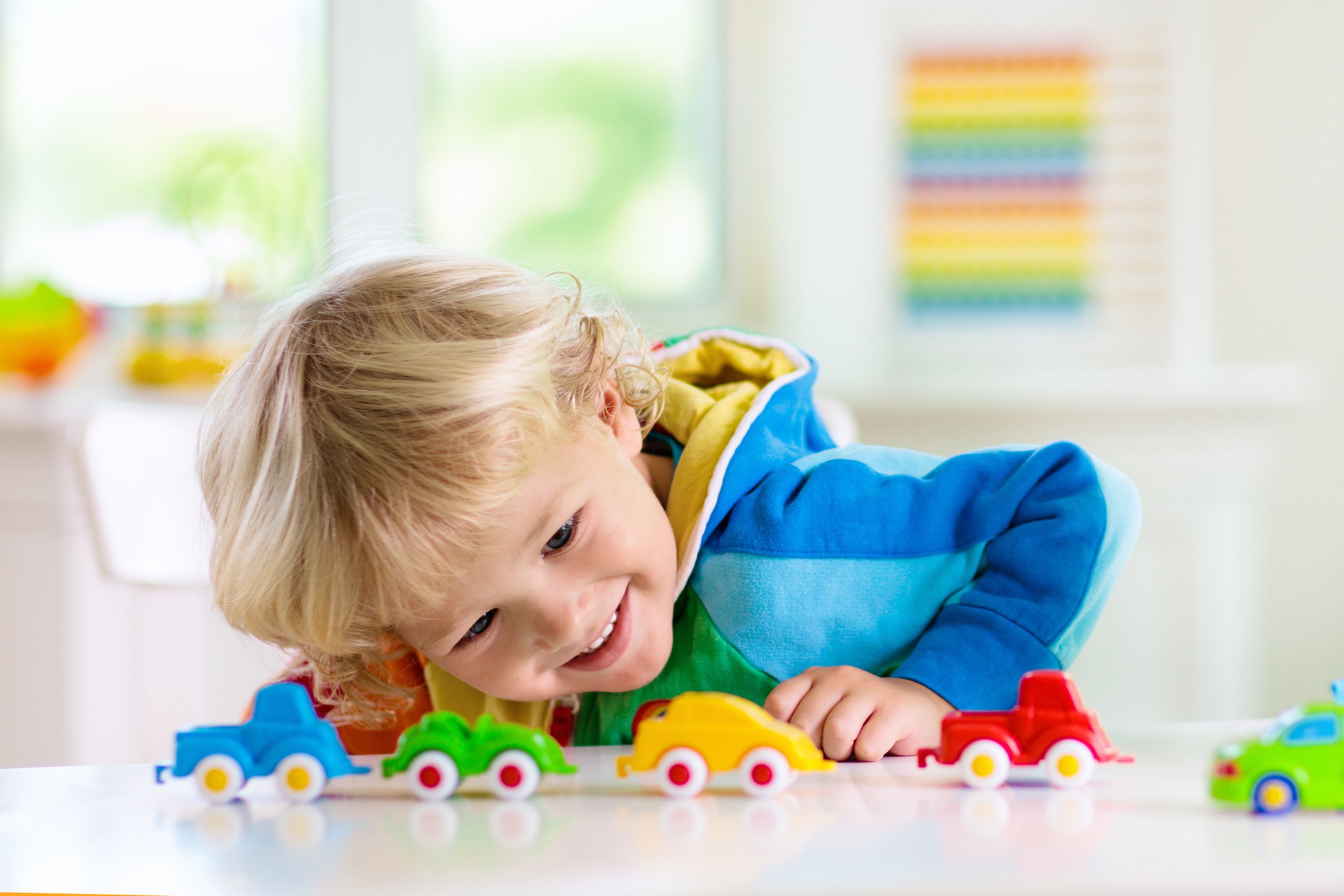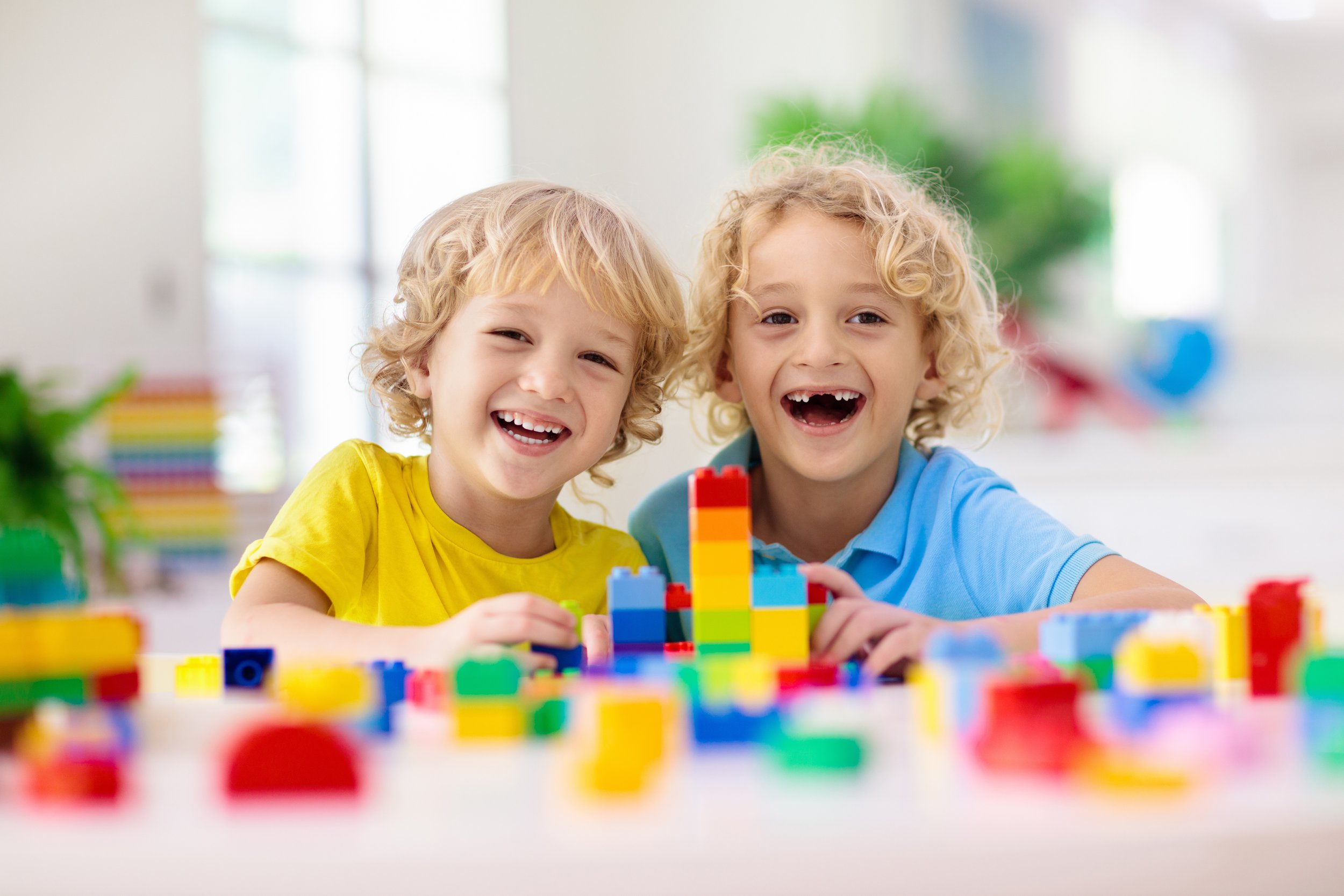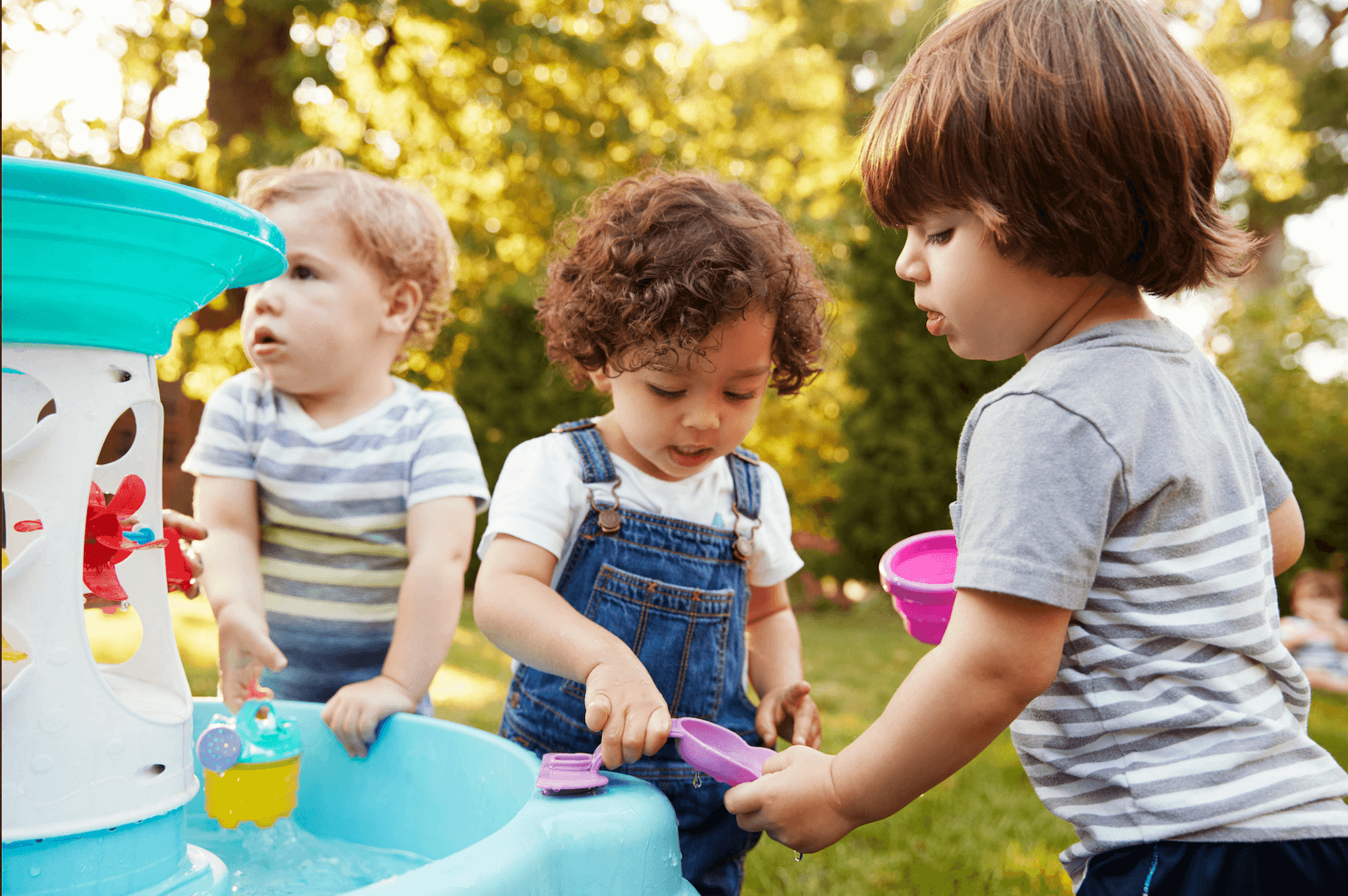What is echolalia?
Echolalia is a form of verbal repetition that involves copying words or phrases spoken by others and is most commonly known as a characteristic of autism.
Sometimes echolalia is used as a self soothing technique by autistic children; when this happens they are not repeating words with the purpose of communicating with others. But echolalia can also be used to communicate a specific message, even if the intended message isn’t obvious to the listener at first.
In this post I’ll teach you the difference between simply repeating words or phrases and echolalia, the two types of echolalia, and the reasons why children use echolalia. We’ll also discuss how echolalia can be utilized as a stepping stone to more flexible language with children combining words in their own way.
Echolalia is different than repeating words and phrases
All children learn to communicate through repetition, or copying words and phrases they hear other people say. When children are simply repeating words as a part of language development, they repeat words that other people say and then begin to use those words in appropriate situations on their own. For example, they may repeat the word “banana” during a snack. Then later on, they say the word “banana” on their own at the grocery store when you pass by the fruit section. Typical language development begins with repeating single words, then children slowly begin to say words on their own and combine words in new ways to speak in phrases and sentences
Echolalia is different from simply repeating to learn words and autistic children often learn language in a different way than their peers. Echolalia is often more rigid (the word order doesn’t change) and specific (certain words or phrases are repeated, but not others). Using echolalia, autistic children may begin by repeating entire phrases or sentences before they repeat or use single words. With echolalia children typically don’t understand what the individual words mean in a phrase or sentence they repeat. Additionally, the phrases or sentences that they repeat are more advanced grammatically than what the child would be able to say on their own.
An Echolalia Example
Here’s an example of what echolalia may sound like:
A child might say “It’s time to go to the park” everytime she wants to go outside. She knows that what she's saying has something to do with going outside, but she doesn’t understand the meaning of the individual words. For example, she doesn’t understand the meaning of the words “it’s” “time” “go” or “park” on their own, so she uses “park” instead of saying “outside.” And you know it’s echolalia because she couldn’t combine the words in a new way to say her own phrase like “I like the park.” Lastly, because she doesn’t understand the words she uses a statement she’s heard her mother repeat many times, rather than asking a question Can we go outside?
Immediate Echolalia vs. Delayed Echolalia
There are two main types of echolalia: immediate echolalia and delayed echolalia.
Immediate echolalia happens when a child repeats a word or phrase they have just heard. For example, a child may repeat a theme song to a TV show they just watched or repeat words they heard another person say. For example, if you asked “What’s your name?” and the child repeated “What’s your name?” in lieu of saying their name.
When children repeat words or phrases at a later time - several minutes to days after they heard someone else say them - it’s called delayed echolalia. Delayed echolalia may feel harder to understand, because the repeated words and phrases are often out of context. However, delayed echolalia can still be utilized to communicate a specific purpose or message.
Why do children use echolalia?
Echolalia may or may not be used for the purpose of communicating a message to someone else. In some instances, children may use echolalia to soothe themselves when they are upset or to self-talk to help them through a difficult process. Other times, children use echolalia for a specific purpose or to communicate a specific message to another person. Here are some examples:
Children may use echolalia to ask for something specific. For example, a child may repeat “For real life?” (a common phrase in the show Bluey) because they want to watch their favorite show or play with specific Bluey toys they can’t find.
Echolalia may be used to ask for more. For example, a child may say “Ready Set Go!” if they want you to repeat a fun game of race cars with them.
Children can use echolalia to get someone’s attention.
Echolalia can be used to say No. A child may say “It’s time to go” when they don’t want to do something because they understand the phrase is associated with a change in activity.
And children may use echolalia to say Yes. For example, if you asked a child “Do you want ice cream?” and they repeated “Do you want ice cream?” in lieu of saying Yes!
The function of echolalia varies based on each child and situation. Identifying the meaning behind echolalia isn’t always easy, but in time you may start to notice patterns of echolalia a child uses to communicate. It can be even harder if your child is using delayed echolalia, as the phrase may seem out of place if you don’t recognize where they first heard the words they are repeating.
From echolalia to “original” language
As we’ve talked about, children can use echolalia as a way to learn to communicate. Working with a speech therapist is often a key element in helping children move from echolalia to talking in their own words.
If children aren’t already using echolalia to communicate a specific message to another person, speech therapy begins by teaching children to use repeated phrases to communicate their ideas, needs, or feelings. For example, if a child’s favorite thing to play with is far animals, they may use the Old McDonald song to help children learn and repeat the names of the animals from the song (On his farm he had a chicken, E I E I O). Speech therapists will use modeling, repetition, and follow-through (or reinforcement) to help children use echolalia for a specific purpose.
Once children are repeating a phrase to send a certain message, the speech therapist can help the child break apart the phrase and learn the meaning of the individual words. At first children use mitigated echolalia; they start to modify the sentences they have been repeating by mixing or recombining the words. As children’s understanding of the individual words advances, they may repeat shorter phrases with just one or a few words. Over time, children will begin to combine the individual words they have learned in their own combinations. Language becomes more spontaneous and children are able to express themselves in their own words more often.
With the support of a speech therapist, children may learn to use the words and grammar structures they repeat in echolalia to put together sentences in their own words, rather than repeating someone else’s.
More common questions parents ask about echolalia:
-
Yes, with the support of a speech therapist children may outgrow echolalia and begin to talk in their own words. However, it's important to note that every child is different and progress in therapy can vary depending on the child's abilities and underlying cause of the echolalia.
-
According to the Diagnostic and Statistical Manual of Mental Disorders, Fifth Edition (DSM-5), echolalia is listed as a characteristic of autism.
-
Yes, children can have echolalia even if they don't have autism.
Echolalia is not specific to autism and it can be found in individuals with other developmental disorders or neurological conditions. A professional evaluation by a Speech Language Pathologist can help determine the underlying cause of the echolalia.
-
Echolalia is a specific language disorder, while Attention Deficit Hyperactivity Disorder (ADHD) is a neurodevelopmental disorder characterized by symptoms of inattention, hyperactivity, and impulsivity. While echolalia and ADHD are different, they can co-occur in some individuals. However, Echolalia is not considered a symptom of ADHD and it is not included in the diagnostic criteria for ADHD.
Written By: Stephanie Keffer Hatleli, MS CCC-SLP
More on the blog:
References List:
Green, J., & Sigman, M. (2001). Social interactions of young children with autism: Reciprocity and initiation of joint attention. International Journal of Behavioral Development, 25(2), 155-170.
Gadow, K. D., Devincent, C. J., & Pomeroy, J. (2002). ADHD symptom subtypes in children with PDD. Journal of Autism and Developmental Disorders, 32(5), 367-378.
Lord, C., Risi, S., Lambrecht, L., Cook, E. H., Leventhal, B. L., DiLavore, P. C., ... & Rutter, M. (2000). The autism diagnostic observation schedule-generic: a standard measure of social and communication deficits associated with the spectrum of autism. Journal of autism and developmental disorders, 30(3), 205-223.
Magill-Evans, J., & Harrison, M. J. (1995). Echolalia in young children with autism: a review of the literature. Journal of autism and developmental disorders, 25(4), 469-485.
Prizant, B. M., Duchan, J., & Wetherby, A. (2002). The use of echolalia in the assessment and treatment of children with autism. Journal of Speech, Language, and Hearing Research, 45(1), 214-226.
© 2020-2025. Stephanie Keffer Hatleli, MS CCC-SLP. All Rights Reserved.
The content offered on ToddlerTalk.com is for informational purposes only. Toddler Talk is not engaged in rendering professional advice, whether medical or otherwise, to individual users or their children or families. No content on this site, regardless of date, should ever be used as a substitute for direct medical advice from your doctor, speech language pathologist, or other health professional. By accessing the content on ToddlerTalk.com, you acknowledge and agree that you are accepting the responsibility for your child’s health and well-being. In return for providing you with information related to home speech and language practice, you waive any claims that you or your child may have as a result of utilizing the content on ToddlerTalk.com.









Explore language tips for potty training tailored to your child's communication stage. From toddlers who are just beginning to talk to children speaking in sentences, learn how to use gestures, sign language, storytelling, and consistency to support your potty training journey.